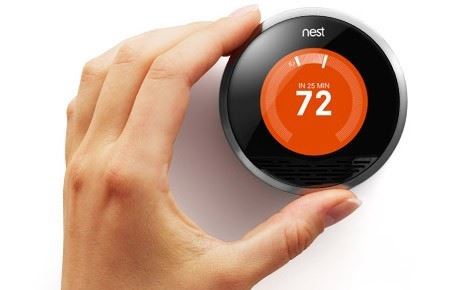Article Updated - April 2025
Serving the Burbank Area Since 1990 - Your Trusted Local HVAC Experts: Kilowatt Heating, Air Conditioning & Electric

You've likely heard the advice before: to save energy and lower your cooling bills, adjust your thermostat to a higher temperature when you're away from home or asleep. This practice, known as "thermostat setback," is often recommended with a standard of around 8°F. For example, if you comfortably keep your thermostat at 78°F during the day when you're home and awake (a setting even advocated by the U.S. Department of Energy for a good balance of comfort and energy savings), then setting it back to 86°F when you're out or asleep can lead to noticeable savings. If you have a programmable or smart thermostat, you can easily automate these setbacks, setting schedules so you don't even have to think about manual adjustments.
In recent years, with the rapid advancements in thermostat technology, you might have encountered some conflicting information suggesting that thermostat setback is no longer an effective way to save money. However, this couldn't be further from the truth. Let's delve into why implementing thermostat setback remains a fundamental and effective strategy for reducing your cooling costs.
The Science Behind the Savings: Less Heat Gain with a Smaller Temperature Difference
One crucial concept to understand about home cooling is the relationship between indoor and outdoor temperatures. The greater the temperature difference between the inside and outside of your home, the faster heat will naturally transfer from the warmer area to the cooler one. In the summer, this means that the cooler you keep your house, the more rapidly the outdoor heat will try to infiltrate your living spaces.
When you program a thermostat setback, you effectively reduce this temperature difference. By allowing your home's temperature to rise slightly when you don't need it to be at its coolest, you slow down the rate at which heat enters your home. Consequently, your air conditioning system doesn't have to work as hard or as long to maintain a comfortable temperature when you return or wake up. If you were to keep your AC running at a lower, consistent setting even when you're not there to enjoy it, it would be constantly battling the faster rate of heat gain, leading to significantly higher energy consumption and costs.
Preventing Overwork: Thermostat Setback and AC Efficiency
Maintaining a consistently low thermostat setting doesn't equate to faster or more powerful cooling. Instead, it primarily forces your air conditioner's compressor to run for longer periods to achieve and maintain that lower target temperature. When you're not even home to benefit from this intensely cooled environment, you're essentially paying for unnecessary operation.
Thermostat setback helps to balance the temperature. When you return home and lower the thermostat, your AC will need to work to bring the temperature down by a manageable 8°F (or whatever your preferred comfortable range is). Because the rate of heat gain was slowed during the setback period, your AC won't have to run for an extended, energy-draining cycle to reach your desired comfort level.
Quantifying the Savings: How Much Can You Really Save?
While the exact savings will vary depending on factors such as your home's insulation, the efficiency of your air conditioning system, local climate, and the extent of your setback, numerous studies have demonstrated the effectiveness of this strategy. On average, a properly sized air conditioning system can see energy savings of 5% to 15% by utilizing a consistent thermostat setback of 7-10°F for at least eight hours a day. Over the many cooling seasons in Burbank and the surrounding areas, these seemingly small percentages can accumulate into significant cost reductions on your energy bills – all from a simple adjustment to your thermostat settings.

Smart Thermostats: Automating Your Savings
Modern smart thermostats make implementing thermostat setback easier than ever. These devices learn your routines and preferences, allowing you to program customized schedules for different days and times. Many even offer features like geofencing, which automatically adjusts the temperature based on your smartphone's location, ensuring setback when you leave and comfortable cooling as you approach home.
Tips for Effective Thermostat Setback:
Consistency is Key: The longer the setback period, the greater the potential savings. Aim for at least 8 hours of setback per day.
Find Your Comfort Zone: Experiment to find a setback temperature that allows your home to cool down comfortably when you return without excessive waiting.
Consider Humidity: In humid climates, a large setback might lead to increased indoor humidity. A slightly smaller setback might be preferable in these situations.
Programmable or Smart Thermostats: Invest in a programmable or smart thermostat to automate your setback schedules and maximize convenience and savings.
Don't Go Too Extreme: While a larger setback saves more energy, avoid setting the temperature so high that it takes an excessively long time for your AC to cool your home upon your return.
Expert Advice for Optimal Cooling in Burbank:
At Kilowatt Heating, Air Conditioning & Electric, we're dedicated to helping homeowners in Burbank and the greater Los Angeles area achieve optimal comfort and energy efficiency. Our experienced technicians can provide personalized advice on thermostat programming, smart thermostat installation, and other energy-saving strategies tailored to your specific home and needs.
Call Kilowatt Heating, Air Conditioning & Electric today at (818) 446-2099 for expert air conditioning services in Burbank and to learn more about how thermostat setback can save you money!

